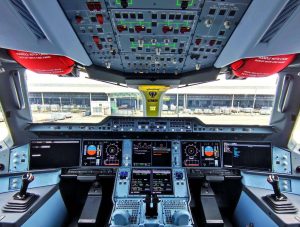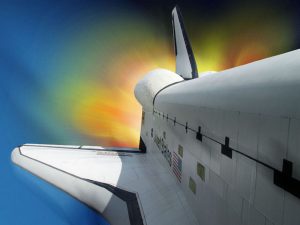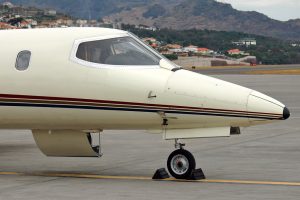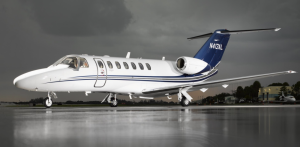Instrument Panel Of An Aircraft Sim
 The instrument panel of an aircraft simulator, or aircraft sim, is a crucial component that significantly influences the realism and effectiveness of flight training and simulation experiences. As technology advances, the complexity and functionality of these instrument panels have evolved to closely replicate the systems found in actual aircraft. This article explores the key features, functionalities, and benefits of the instrument panel in an aircraft sim, providing insights into how it enhances the overall simulation experience.
The instrument panel of an aircraft simulator, or aircraft sim, is a crucial component that significantly influences the realism and effectiveness of flight training and simulation experiences. As technology advances, the complexity and functionality of these instrument panels have evolved to closely replicate the systems found in actual aircraft. This article explores the key features, functionalities, and benefits of the instrument panel in an aircraft sim, providing insights into how it enhances the overall simulation experience.
What is an aircraft sim?
An aircraft sim, commonly referred to as an aircraft simulator, is a system designed to replicate the experience of flying an aircraft. These simulators are used for various purposes, including pilot training, aviation research, and recreational flying. They vary in complexity, from basic desktop applications to high-end full-motion systems with advanced visual and sensory effects.
A crucial aspect of an aircraft sim is its instrument panel, which mirrors the cockpit controls, displays, and systems of real-world aircraft. The instrument panel provides users with a realistic and interactive environment for learning and practicing flight operations.
Key features of the instrument panel in an aircraft sim
1) Authentic cockpit layout
The primary feature of an aircraft sim’s instrument panel is its authenticity. High-quality simulators strive to replicate the cockpit layout and arrangement of controls found in actual aircraft. This includes the placement of instruments, switches, and displays, providing users with a familiar and realistic environment.
-
- Instrument placement: The panel should accurately reflect the position of key instruments and controls, such as the altimeter, airspeed indicator, and navigation displays.
- Control arrangement: The arrangement of switches, knobs, and levers should match that of the real aircraft, allowing users to become accustomed to the cockpit layout.
2) Realistic flight instruments
The flight instruments in an aircraft sim’s panel are essential for providing users with accurate and reliable information during flight. These instruments replicate those found in actual aircraft and are crucial for monitoring and controlling various aspects of flight.
Key flight instruments to look for include:
-
- Airspeed indicator: Displays the current speed of the aircraft, helping pilots maintain optimal performance and avoid stalls.
- Altimeter: Measures the aircraft’s altitude above sea level, essential for maintaining safe flight levels and navigating through controlled airspace.
- Attitude indicator: Shows the aircraft’s orientation relative to the horizon, helping pilots maintain proper pitch and roll angles.
3) Advanced avionics and navigation systems
Modern aircraft sims often include advanced avionics and navigation systems that enhance the realism and functionality of the instrument panel. These systems provide users with tools for managing flight operations, navigation, and communication.
Important avionics and navigation systems include:
-
- GPS and navigation displays: Provide detailed information on the aircraft’s position, route, and waypoints, allowing pilots to plan and execute precise flight paths.
- Autopilot systems: Enable users to set and manage automatic flight controls, including altitude, heading, and speed, reducing the need for manual adjustments.
- Radio communication systems: Facilitate communication with air traffic control and other aircraft, including features such as frequency selection and voice communication.
4) Interactive control elements
The interactive control elements of the instrument panel are designed to provide users with hands-on experience in operating the aircraft. These elements include physical and virtual controls that allow users to adjust settings, manage systems, and respond to various flight conditions.
Key interactive controls include:
-
- Switches and knobs: Allow users to control various systems, such as lights, fuel pumps, and engine settings.
- Levers and joysticks: Enable users to manage throttle, flaps, and other flight controls, providing a tactile feel for aircraft operation.
- Touchscreen displays: In some advanced simulators, touchscreen interfaces replicate modern avionics systems, providing a user-friendly way to interact with the panel.
5) Customisation and configuration options
Customization and configuration options are essential for tailoring the instrument panel to specific aircraft types and user preferences. High-quality aircraft sims offer a range of customization features, allowing users to adapt the panel to different scenarios and requirements.
Customisation options may include:
-
- Aircraft-specific panels: Users can select and configure instrument panels to match different aircraft models, including general aviation planes, commercial airliners, and military jets.
- Adjustable displays: Allow users to modify the layout, size, and arrangement of displays and instruments to suit their preferences and needs.
- Personalised controls: Users can configure control settings, such as button assignments and control sensitivities, to match their flying style and preferences.
Benefits of a realistic instrument panel
1) Enhanced training effectiveness
A realistic instrument panel is crucial for effective flight training, as it provides users with an authentic environment for learning and practicing flight operations. By replicating the layout and functionality of real-world aircraft, users can develop familiarity with cockpit instruments and controls, improving their skills and confidence.
Benefits for training include:
-
- Familiarisation: Users become accustomed to the layout and operation of aircraft instruments, making it easier to transition to real-world flying.
- Procedural practice: Realistic panels allow users to practice standard operating procedures, emergency drills, and other essential tasks.
- Skill development: Users can refine their flying skills, including navigation, communication, and aircraft management, in a controlled and safe environment.
2) Improved situational awareness
A well-designed instrument panel enhances situational awareness by providing users with accurate and comprehensive information about the aircraft’s performance and surroundings. This is essential for making informed decisions and responding to changing flight conditions.
Benefits for situational awareness include:
-
- Comprehensive data: Users have access to critical flight data, such as altitude, speed, and heading, helping them monitor and manage the aircraft effectively.
- Real-time feedback: Instantaneous updates on flight parameters and system status allow users to respond promptly to changes and maintain control.
- Navigation assistance: Advanced avionics and navigation systems provide detailed route information and alerts, aiding in precise navigation and flight planning.
3) Increased engagement and enjoyment
A realistic and interactive instrument panel enhances the overall enjoyment of the simulation experience. By providing a visually appealing and functional cockpit environment, users can immerse themselves in the flying experience and enjoy a more engaging and rewarding simulation.
Benefits for engagement include:
-
- Immersive experience: Realistic visuals and interactive controls create a more immersive and engaging flying experience, allowing users to feel as though they are in an actual cockpit.
- Interactive learning: Hands-on interaction with cockpit controls and systems provides a more engaging way to learn and practice flying skills.
- Enjoyable recreation: For aviation enthusiasts, a well-designed instrument panel adds to the enjoyment of recreational flying and exploration.
Choosing the right aircraft sim with an effective instrument panel
When selecting an aircraft sim with a high-quality instrument panel, consider the following factors:
- Simulation quality: Evaluate the overall quality of the simulator, including the accuracy of the instrument panel, the realism of flight dynamics, and the fidelity of visual and sensory effects. Look for simulators that offer detailed and realistic instrument panels that closely replicate those found in actual aircraft.
- Compatibility and system requirements: Ensure that the simulator is compatible with your computer or hardware setup and meets the system requirements for optimal performance. Check for compatibility with additional hardware, such as flight controllers and VR headsets, to enhance the simulation experience
- Customisation options: Consider the customisation options available for the instrument panel, including the ability to configure aircraft-specific panels, adjust display layouts, and personalise control settings. Customization options allow you to tailor the simulator to your preferences and needs.
- Training and educational tools: If you are using the simulator for training or educational purposes, look for features such as training scenarios, performance tracking, and instructional materials. These tools can enhance the effectiveness of your learning and practice.
- User reviews and recommendations: Research user reviews and recommendations to gauge the performance and quality of the simulator’s instrument panel. Feedback from other users can provide valuable insights into the strengths and weaknesses of different options.
Instrument panel elevates the flying experience
The instrument panel of an aircraft sim plays a crucial role in creating a realistic and effective simulation experience. With features such as authentic cockpit layouts, realistic flight instruments, advanced avionics, and interactive controls, a high-quality instrument panel enhances training effectiveness, situational awareness, and overall enjoyment.
By understanding the key features and benefits of the instrument panel, you can make an informed decision when choosing an aircraft sim that meets your needs and preferences. Whether you are a professional pilot, a student in flight training, or an aviation enthusiast, the right instrument panel can elevate your flying experience and provide valuable opportunities for learning and practice.
Embrace the best features of modern aircraft simulators and explore the world of virtual aviation with a realistic and engaging instrument panel. Enjoy the thrill of flight and the satisfaction of mastering the skies with cutting-edge technology and innovation.










